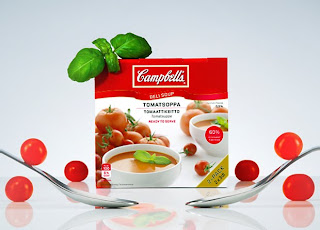Top of the day to you all! We have been waiting for this story to become "official". Well here it is an article by Carol Wolf of Bloomberg entitled:
Walgreen Plans to Offer Fresh Food, Prepared Meals By Carol Wolf
Jan. 15 (Bloomberg) -- Walgreen Co. plans to offer fresh foods and prepared meals to draw “time-starved” shoppers to its more than 7,000 stores, taking on retailers such as Target Corp. and Kroger Co.
The drugstore chain has been talking with foodmakers including Unilever NV, Nestle SA and Sara Lee Corp. about creating private-label and branded products, said Bryan Pugh, vice president of merchandising.
“Everyone is time-starved and we have the most convenient 7,000 locations in the U.S.,” Pugh said in a Jan. 11 telephone interview. “They’re on-the-way-home destinations that are easy to get in and out of and will provide a good value.” He declined to say when the project will be implemented or how much it costs.
Walgreen, based in Deerfield, Illinois, must sort out supply and distribution issues and test in some markets before introducing freshly prepared foods such as salads, cut fruits, ready-to-bake pizzas and sandwiches into more stores, he said.
The goal of the program, along with the sale of beer and private-label wine, is to boost revenue, Pugh said. Same-store sales declined in November and December as 10 percent unemployment and falling home values blunted consumer spending.
“If they can get consumer acceptance, this would be good for sales,” said Andrew Wolf, a Richmond, Virginia-based analyst with BB&T Capital Markets, which recommends that investors buy the shares. “Consumers aren’t used to buying salads from a drugstore chain. That would have to change.”
One-Stop Shopping
The move will push Walgreen into competition with supermarket chains Kroger and Safeway Inc., membership warehouse clubs operated by Costco Wholesale Corp. and Wal-Mart Stores Inc., and retailers such as Target. Walmart’s supercenters sell prepared foods including ready-to-bake pizzas.
“You’ve also got convenience stores and gas stations trying to go in that direction,” said Bob Goldin, an executive vice president at Technomic Inc., a Chicago-based food industry consulting firm.
Walgreen “does have a lot of stores, but I don’t see it as being a venue of choice for consumers,” Goldin said. “It will be hard for them to establish credibility in freshness and variety. I don’t see it as being a big business driver.”
Target, the second-largest U.S. discount store, is expanding its food offerings in general merchandise stores under the name PFresh. PFresh stores will have fruit, ground meat and other fresh foods, as well as pre-made sandwiches, salads and other prepared meals in the store’s Food Avenue area, said Jana O’Leary, a spokeswoman.
Adding PFresh Stores
“Our customers asked for an expanded food section,” she said. “We want it to be a one-stop location for all their needs.”
Target has 108 PFresh stores and plans to have 350 by year’s end.
Walgreen hired a director of fresh foods, who will begin work in several weeks, Pugh said. He wouldn’t name the person.
“We won’t get our customer every day on the way home, but if we could get 50 percent of our customers one day a week on the way home, that would do wonders for our sales,” he said.
Pugh, 47, previously worked for Tesco Plc, the U.K.’s largest retailer, and helped design Tesco USA’s Fresh & Easy Neighborhood markets, which offered freshly prepared meals.
“Fresh & Easy conceptually was a home run, but it hasn’t worked out in the field,” BB&T’s Wolf said. “The stores lacked ambiance and were in low-rent, C locations. Walgreen’s has A locations. They really do have the best locations in the U.S.”
Private-Label Wines
Walgreen is selling private-label wines at about 1,500 locations. It sold more than 200,000 bottles, at $2.99 a bottle, since the line, which includes chardonnay, cabernet, zinfandel and merlot, was introduced in December under the Southern Point name, Pugh said. A $5.99 private label will be offered in April, he said.
Stores carrying beer and wine have higher average sales per person, he said. That purchase alone pushes up sales in a shopper’s grocery cart as much as 60 percent, he said.
“Beer and wine are proven winners for drugstores, but not proven fixers,” Wolf said. “What’s for dinner will be much trickier to pull off.” The challenge is attracting enough customers to keep the fresh food turning over and finding space for the new products in already crowded venues, he said.
Walgreen fell 51 cents to $36.60 at 4:15 p.m. in New York Stock Exchange composite trading. The shares rose 49 percent last year.
Since 1991 Foodservice Solutions of Tacoma, WA has been the global leader in the Grocerant niche. More about Steven Johnson: http://www.linkedin.com/in/grocerant or www.grocerants.blogspot.com.














.jpg)



















